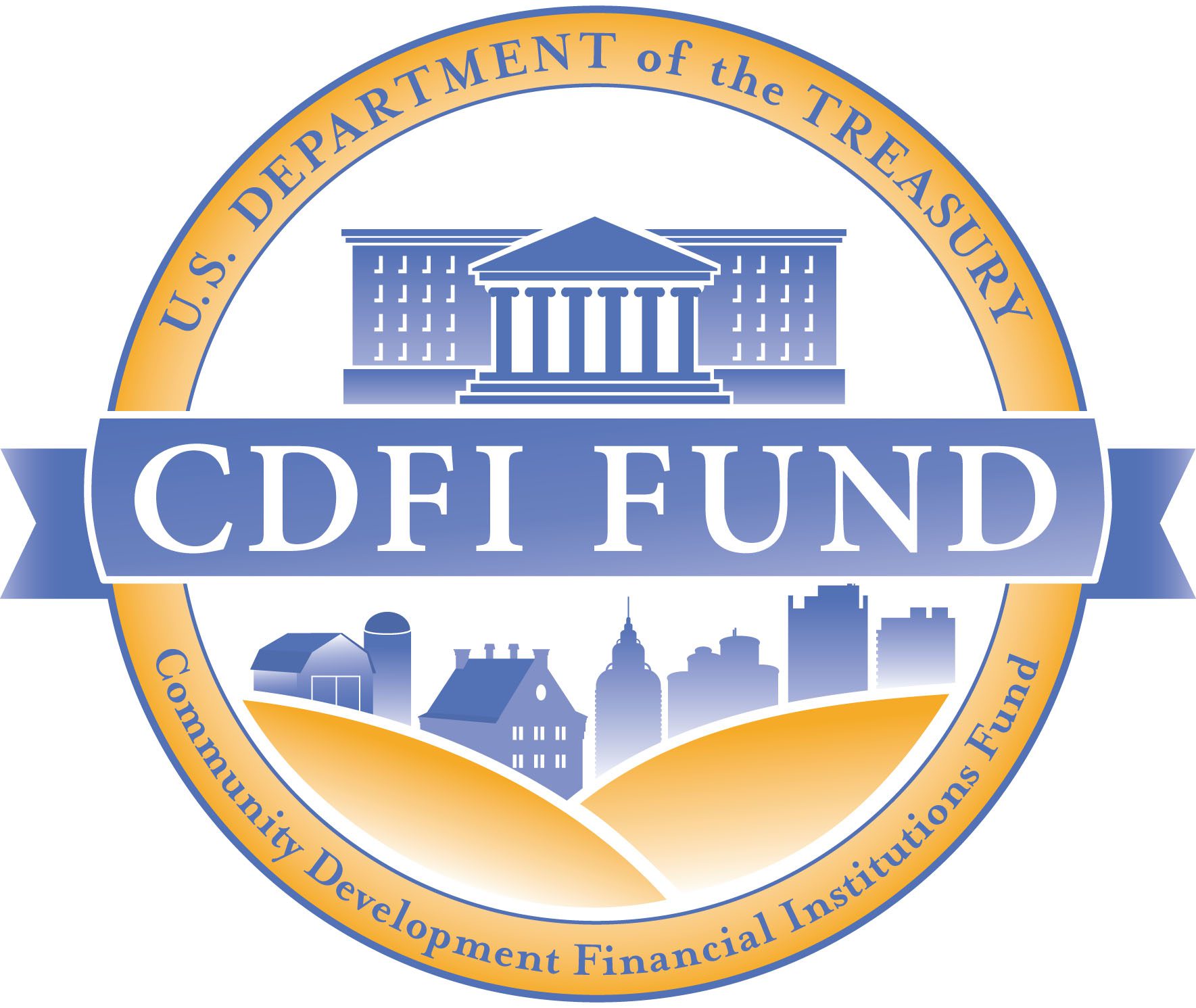History of the Bond Guarantee Program
Established by the Small Business Jobs Act of 2010, the CDFI Bond Guarantee Program responds to a critical market need—low-cost capital to spur economic growth and jump-start community revitalization. Under the program, Qualified Issuers (CDFIs or their designees) apply to the CDFI Fund for authorization to issue federally guaranteed bonds worth a minimum of $100 million per issuance. The bonds provide Eligible CDFIs with access to long-term, low-cost, fixed-rate capital to reignite the economies of distressed communities by making Secondary Loans.
Synopsis by Year:
- 2023:
- Total Amount: $300M
- Qualified Issuers:
- Bank of America - $200M
- Community Reinvestment Fund - $100M
- Eligible CDFIs: 3
- Key Uses: Charter schools, rental housing, daycare centers, commercial real estate, small businesses, healthcare facilities, not-for-profit organizations, and rental housing with $100M specifically aimed at low-income households in underserved areas of California.
- 2022:
- Total Amount: $355M
- Qualified Issuers:
- Community Reinvestment Fund - $100M
- Inbank - $125M
- Opportunity Finance Network - $130M
- Eligible CDFIs: 5
- Key Uses: Charter schools, rental housing, daycare centers, mortgage financing, property rehabilitation, small businesses, single-family mortgages, funding for charter schools, rental housing in Minnesota.
- 2021:
- Total Amount: $100M
- Qualified Issuer: Bank of America - $100M
- Eligible CDFIs: 1
- Key Uses: Real estate, rental housing, charter schools.
- 2020:
- Total Amount: $100M
- Qualified Issuer: Community Reinvestment Fund - $100M
- Eligible CDFIs: 1
- Key Uses: Charter schools, real estate, healthcare.
- 2019:
- Total Amount: $100M
- Qualified Issuer: Opportunity Finance Network - $100M
- Eligible CDFIs: 3
- Key Uses: Rental housing, small businesses, affordable housing, healthcare, affordable rental housing in Minnesota.
- 2018:
- Total Amount: $150M
- Qualified Issuer: Community Reinvestment Fund - $150M
- Eligible CDFIs: 1
- Key Uses: Charter schools, real estate, healthcare.
- 2017:
- Total Amount: $245M
- Qualified Issuers:
- Community Reinvestment Fund - $100M
- Opportunity Finance Network - $145M
- Eligible CDFIs: 11
- Key Uses: Home foreclosure assistance, rental housing, solar projects, charter schools, healthcare, commercial real estate, affordable housing, and more.
- 2016:
- Total Amount: $265M
- Qualified Issuers:
- Community Reinvestment Fund - $165M
- Bank of America - $100M
- Eligible CDFIs: 4
- Key Uses: Senior living, rental housing, healthcare, charter schools, commercial real estate, and more.
- 2015:
- Total Amount: $327M
- Qualified Issuers:
- Opportunity Finance Network - $227M
- Community Reinvestment Fund - $100M
- Eligible CDFIs: 8
- Key Uses: Rental housing, senior living, healthcare, charter schools, commercial real estate, small businesses, and more.
- 2014:
- Total Amount: $200M
- Qualified Issuer: Community Reinvestment Fund - $200M
- Eligible CDFIs: 4
- Key Uses: Healthcare, senior living, charter schools, commercial real estate, and more.
- 2013:
- Total Amount: $325M
- Qualified Issuers:
- Community Reinvestment Fund - $125M
- Bank of America - $100M
- Opportunity Finance Network - $100M
- Eligible CDFIs: 3
- Key Uses: Affordable housing, small businesses, non-profits.
This comprehensive look showcases the significant impact of the CDFI Bond Guarantee Program over the years, facilitating critical funding across a range of areas and benefiting various communities.
Understanding the CDFI Fund Bond Guarantee Program
The CDFI Fund Bond Guarantee Program helps community development financial institutions (CDFIs) get money to support their projects. This program offers guarantees on bonds that these institutions issue. By backing these bonds, it makes it less risky for CDFIs to find funds for affordable housing and other community projects. When people invest in underserved communities, it helps everyone and promotes financial inclusion.
What is the CDFI Fund Bond Guarantee Program?
The CDFI Fund Bond Guarantee Program is a program set up by the government. It helps CDFIs grow and do more good things for the community. Here’s what you need to know:
- Federal Register: The program is listed in the federal register.
- CDFI Fund: Managed by the U.S. Department of the Treasury, which supports affordable lending.
- Financial Inclusion: This program works to make it easier for low-income people to use financial services.
How does the program work?
The bond guarantee program works in a simple way with different groups involved. Here’s how it goes:
- Issuers: CDFIs create bonds to get money.
- Trustee: A trustee takes care of the bond money and follows all the rules.
- Fee Structure: CDFIs pay a fee to get the bond guarantee.
- Evaluation Process: Every request is checked to meet CDFI certification standards.
- Public-Private Partnerships: It brings together public and private help for better financial stability.
- Credit Enhancement: With loan guarantees, the program makes it easier for CDFIs to get bond financing.
Benefits of Participating in the CDFI Fund Bond Guarantee Program
Joining the CDFI Fund Bond Guarantee Program has great perks for CDFIs and their communities. Some of these benefits include:
- Access to Capital: CDFIs can raise money by issuing bonds, which helps fund various projects.
- Economic Development: This program helps grow the economy in areas that need help.
- Community Investment: It allows CDFIs to invest in affordable housing and projects that improve the community.
What are the benefits of issuing bonds through the program?
By issuing bonds through the CDFI Fund Bond Guarantee Program, CDFIs can enjoy many benefits like:
- Enhanced Management: CDFIs have expert management of bond funds.
- Funding Opportunities: They can connect with larger funding sources for loans.
- Impact Investing: Investors want to put money into projects that help communities.
- Capital Access: More money means more chances to revitalize communities.
How can participation in the program help CDFIs?
Getting involved in the bond guarantee program gives CDFIs some key advantages:
- Financial Inclusion: The guarantees help them serve more low-income people.
- Economic Empowerment: CDFIs can support local economic efforts better.
- Low-Income Investment Strategies: The program encourages ideas to tackle financial challenges in underserved areas.
- Community Resilience Bonds: It allows them to create bonds that strengthen local economies.
FAQ Section
What is a CDFI?
A Community Development Financial Institution (CDFI) helps provide financial services to those who cannot get regular banking services. They focus on helping low-income families and neighborhoods.
How do bond guarantees work?
Bond guarantees mean that if the issuer can't pay back, the guarantor will cover the debt. This makes it safer for investors and encourages them to fund projects in the community.
Can anyone issue bonds under this program?
Nope! Only certified CDFIs can issue bonds through the CDFI Fund Bond Guarantee Program. This keeps the focus on community development.
Eligibility Requirements for the CDFI Fund Bond Guarantee Program
To join the CDFI Fund Bond Guarantee Program, Community Development Financial Institutions (CDFIs) must meet certain eligibility requirements. Here’s what you need to know:
- CDFI Certification: Organizations must be certified as CDFIs by the CDFI Fund. This certification is key for accessing program benefits.
- Management and Compliance: CDFIs must show good management and follow federal rules. This helps to make sure public and private funds are used wisely.
- Trustees and Governance: Each CDFI needs a board of trustees to watch over the organization and keep it honest.
- Serving Underserved Communities: The mission should include helping underserved communities. This promotes financial inclusion and economic growth.
Knowing these requirements helps CDFIs see if they are ready and how their goals can fit with the program.
What are the eligibility criteria for CDFIs to participate in the program?
CDFIs that want to take part in the bond guarantee program need to follow certain standards found in the Federal Register. Here are the key points:
- Strong Governance: CDFIs need to have good management and governance.
- Mission-Driven: They should focus on community investment and economic empowerment through teamwork with public and private partners.
- Financial Stability: CDFIs must show they can manage investments and loans well.
These criteria make sure only capable organizations can get help from the CDFI Fund.
What types of projects can be financed through the program?
The CDFI Fund Bond Guarantee Program helps fund various important projects. Here’s a list of project types eligible for financing:
- Affordable Housing Bonds: Funding to create affordable housing units.
- Economic Empowerment Projects: Programs aimed at boosting local economies and creating jobs.
- Community Revitalization: Improving urban areas and making them better places to live.
- Health Care Access Financing: Projects that improve health services in underserved regions.
- Rural Development Finance: Supporting development in rural areas to spur growth.
This diversity of projects shows the program's commitment to enhancing communities and meeting urgent needs.
Application Process for the CDFI Fund Bond Guarantee Program
Getting involved with the CDFI Fund Bond Guarantee Program means following a clear application process. Here’s what you need to do:
What is the application process for the program?
The application steps for CDFIs include:
- Initial Inquiry: Interested CDFIs should contact the CDFI Fund for info about eligibility and what’s needed.
- Documentation Submission: Applicants must send in detailed documents, like financial statements and project plans.
- Feedback Review: The CDFI Fund will check the submission and give feedback to ensure everything meets the standards.
- Approval and Issuer Designation: Once approved, CDFIs will be designated as issuers for bond financing.
This process ensures only qualified organizations can access bond guarantees, encouraging responsible management.
What documentation is required?
To apply for the program, CDFIs need to prepare specific documents, including:
- Representations and Warranties: Statements that confirm the CDFI's qualifications.
- Data and Covenants: Detailed info about the financial situation and plans.
- Credit Enhancement Documentation: Papers showing how the CDFI can handle risks.
- Social Enterprise Funding Plans: Plans that align funding with social missions.
- Tax-Exempt Bonds Information: Details about any tax-exempt bonds related to project financing.
Having the right and complete documents is very important for a successful application.
FAQ Section
What is a CDFI?
A Community Development Financial Institution (CDFI) is focused on giving financial services to underserved communities to help improve access to money.
How do CDFIs benefit communities?
CDFIs promote economic growth, affordable homes, and help revitalize neighborhoods, improving life quality for people living there.
Can any CDFI apply for the bond guarantee program?
Only CDFIs that meet specific eligibility requirements set by the CDFI Fund can apply for this program.
Feel free to share your thoughts or experiences about CDFIs and their role in your community!
Considerations for Using the CDFI Fund Bond Guarantee Program
The CDFI Fund Bond Guarantee Program helps community development financial institutions (CDFIs) get money they need. This program offers bond guarantees, which makes it easier and cheaper for CDFIs to borrow money. Here are some important things to think about when using this program:
- Maximizing Benefits: To really benefit from CDFI funding, you should learn how the bond guarantee works. It can help lower borrowing costs, making it easier to fund projects like social enterprises and workforce development. Partnering with trustees and ensuring compliance will help manage these funds well.
- Assessing Risks: Take time to check the risks, like the chances of default and current interest rates. Knowing how the market is doing can help reduce risks tied to issuing bonds.
- Financial Sustainability: Make sure your organization has a solid plan for dealing with debt. Paying attention to long-term financial sustainability means your CDFI can support affordable lending and carry out community projects better.
- Community Investment: Use bond guarantees to work on projects that encourage economic development and improve financial inclusion in neighborhoods. Look into how impact investing can help make these projects stronger.
Additional Funding Options for CDFIs
Aside from the CDFI Fund Bond Guarantee Program, there are other funding choices for CDFIs. Exploring these options can help support various local projects and improve financial access.
- Other Bond Guarantee Programs: There are different bond programs that might help CDFIs do their work better. Check the federal register for any new options from the Department of Treasury or other groups.
- Loan Programs: Find out about specific loan programs meant for minority businesses, rural development finance, and microfinance initiatives. These can give critical support for community resilience.
- Accessing Additional Funding Options: CDFIs can also look at institutional investments along with public-private partnerships for better capital access. Working together with local governments can lead to creative financing solutions.
Accessing Additional Funding Options
Here are some easy steps to find additional funding:
- Research Available Programs: Keep an eye out for current offerings from banks and nonprofits.
- Network with Other CDFIs: Team up and share tips or resources that others have found useful.
- Utilize Community Development Financial Institutions: Take advantage of the experiences of CDFIs across the country.
- Utilize Technology: Look for platforms and tools that make applying for funds easier.
By thinking about both the CDFI Fund Bond Guarantee Program and other funding options, CDFIs can help improve economic stability and encourage community growth.
Summary
Getting the most from the CDFI Fund Bond Guarantee Program means knowing its benefits and risks. Checking out other funding options can also help a lot in serving communities better. Be active in exploring different programs and partnerships to increase your impact.
FAQ
What is the CDFI Fund Bond Guarantee Program? The CDFI Fund Bond Guarantee Program lets CDFIs issue bonds with guarantees, making it easier for them to get money.
How can I maximize the benefits of bond guarantees? Build strong partnerships, handle risks wisely, and focus on long-term financial stability.
What other funding options are available for CDFIs? You can find different loan programs, institutional investments, and ways to collaborate with local governments.
The Basics of the CDFI Fund Bond Guarantee Program
What is the CDFI Fund Bond Guarantee Program?
The CDFI Fund Bond Guarantee Program helps community development financial institutions (CDFIs) by providing long-term financing. These federal credit programs support underserved communities. The program aids in economic development and capital distribution in these areas.
Key Features of the CDFI Fund Bond Guarantee
- Bond Guarantee: Backed by the federal government.
- Subsidy and Credit Enhancement: Financial help to make projects more affordable.
- Community Revitalization: Focus on low-income communities.
- Financial Inclusion Programs: Supports efforts to improve financial inclusion.
How Does the Bond Issuance Process Work?
The bond issuance process involves several steps:
- Issuer: Qualified entity issues the bonds.
- Trustee: Oversees the bond proceeds.
- OMB: Office of Management and Budget reviews the bond issuance.
- Community-Oriented Projects: Bonds fund community projects.
- Credit Access: Improves credit access for financial intermediaries.
Eligibility and Application Process
Who Can Apply for the CDFI Fund Bond Guarantee?
Eligible applicants include:
- CDFIs: Community development financial institutions.
- Nonprofit Financing: Nonprofits focused on small business loans and community services.
- Veteran Services: Programs supporting veterans.
- CDFI Capacity Building: Initiatives to strengthen CDFIs.
- Minority-Owned Businesses Support: Financial help for minority-owned businesses.
What are the Eligibility Criteria?
Organizations must meet specific eligibility criteria:
- CDFI Certification: Must be a certified CDFI.
- Compliance: Follow federal regulations.
- Economic Growth Initiatives: Projects that promote economic growth.
- Rural Development Loans: Loans for rural areas.
- Microenterprise Support: Help for microenterprises.
- New Markets Tax Credit: Use this credit for community investments.
Steps to Submit an Application
To submit an application:
- Prepare Your Proposal: Follow guidelines from the Department of Treasury.
- Federal Register: Check announcements in the Federal Register.
- Secretary Approval: Get approval from the Secretary.
- Submit Applications: Send your application to the designated office.
- Public Infrastructure Investments: Highlight public infrastructure projects.
- Job Creation Funding: Include details on job creation plans.
Benefits of Participating in the Bond Guarantee Program
How Can the Program Benefit Your Organization?
Joining the Bond Guarantee Program can help your organization, especially if you are a Community Development Financial Institution (CDFI). This program offers bond guarantees to finance underserved communities. It promotes economic development and makes a positive community impact. By using these financial services, your organization can grow sustainably and better achieve its mission.
What Types of Projects are Eligible for Funding?
The Bond Guarantee Program funds various community-focused projects. Eligible projects include:
- Affordable Housing Financing: Develop or renovate affordable housing units.
- Educational Facilities Financing: Secure funding for schools and educational centers.
- Public Infrastructure Investments: Finance projects like roads, bridges, and utilities.
- Community Revitalization: Improve community spaces and facilities.
Long-term Financial Advantages
Participating in the Bond Guarantee Program offers several long-term financial benefits:
- Long-term Financing: Access extended financing terms that are often better than traditional loans.
- Credit Enhancement: Improve creditworthiness with a federal guarantee.
- Capital Distribution: Allocate capital efficiently to high-impact projects.
- Economic Growth Initiatives: Promote broader economic growth through strategic investments.
- Sustainable Urban Development: Support projects that contribute to long-term urban sustainability.
Compliance and Regulatory Requirements
What are the Compliance Obligations?
Organizations in the Bond Guarantee Program must follow several compliance rules:
- Compliance with Regulatory Agencies: Follow guidelines set by regulatory agencies.
- Federal Register: Keep up with notices and rules published in the Federal Register.
- Nondiscrimination: Follow nondiscrimination policies as stated in the Code of Federal Regulations.
How to Maintain Compliance with Federal Regulations?
To stay compliant with federal rules, follow these steps:
- Treasury Guidelines: Follow the Department of Treasury's compliance rules.
- Regular Audits: Conduct regular audits to keep up with compliance.
- Representation and Warranties: Make accurate representations and warranties to maintain program integrity.
Common Challenges and How to Overcome Them
Organizations may face common problems, but here are ways to solve them:
- Risk Management: Use strong risk management practices to reduce potential problems.
- Regulatory Challenges: Stay informed about rule changes to meet compliance requirements.
- Credit Access: Improve credit access through financial literacy programs and community outreach.
Financial Implications and Risk Management
What are the Financial Risks Involved?
When participating in a bond guarantee program, there are several financial risks. One major risk is the potential for default, which can affect credit risk and overall financial stability. Federal credit programs, like the CDFI Bond Program, provide support but come with challenges. Understanding these risks helps in managing them well.
Another key factor is providing financial services for underserved communities without interruption. This requires careful risk management, including assessing bond guarantees and their impact on creditworthiness.
How to Mitigate Risks in the Bond Guarantee Program?
Risk mitigation strategies are vital for any bond guarantee program's success. Key approaches include:
- Insurance and Compliance: Ensure adequate insurance coverage and compliance with all regulations.
- Regulatory Agencies: Work closely with regulatory agencies to stay updated on compliance requirements.
- Credit Enhancement: Use credit enhancement techniques to improve bond creditworthiness.
- Treasury Management: Implement good treasury management practices to oversee funds and reduce risk.
- Peer Group Analysis: Compare practices with those of peer groups to find strengths and weaknesses.
- Financial Intermediaries: Engage with financial intermediaries to help with bond issuance and risk assessment.
Following these steps can help in managing the inherent risks and maintaining the program's integrity.
Impact on Credit Ratings and Financial Stability
Participating in a bond guarantee program can impact an institution's credit ratings and overall financial stability. To maintain strong credit ratings, it's important to leverage investments wisely and ensure compliance with the Community Reinvestment Act. Federal credit programs, like CDFI funding, play a significant role in this process.
The Department of Treasury often provides oversight to ensure capital distribution is managed well. Maintaining full faith and credit in these programs helps bolster financial stability and encourages continued investment. Providing financial services for underserved communities remains a core goal, promoting economic growth and community development.
Case Studies and Success Stories
Successful Implementation of the CDFI Bond Guarantee Program
The CDFI Bond Guarantee Program has seen successful implementations demonstrating its community impact. For example, community development financial institutions have used this program to promote financial inclusion and economic development. Long-term financing options provided through the bond guarantee have enabled affordable housing projects and rural development loans.
These success stories show how community-driven initiatives can use the bond program to achieve significant community impact.
Lessons Learned from Previous Participants
Participants of the CDFI Bond Guarantee Program have learned valuable lessons over time. Key takeaways include:
- Financial Literacy Programs: Investing in financial literacy programs leads to better decision-making.
- Nonprofit Financing: Supporting nonprofit organizations boosts community revitalization efforts.
- Economic Growth Initiatives: Focusing on job creation funding drives sustainable economic growth.
- Social Impact Bonds: Using social impact bonds addresses diverse community needs.
- Disaster Recovery Loans: Providing disaster recovery loans is important for rebuilding after crises.
These lessons highlight the importance of planning and support for program participants.
Real-World Examples of Fund Utilization
Several case studies show effective fund utilization within the CDFI Bond Guarantee Program:
- Charter School Financing: Investments have supported charter school expansions, improving educational opportunities.
- Public Infrastructure Investments: Funding has been used for public infrastructure projects, enhancing community facilities.
- Green Energy Financing: Projects focused on green energy have promoted environmental sustainability.
- Local Entrepreneurship Support: Supporting local entrepreneurs has spurred innovation and economic activity.
- Low-Income Community Investment: Investments in low-income communities have led to significant improvements in living standards.
These examples show the versatility and positive impact of the CDFI Bond Guarantee Program across various sectors.
Future Prospects and Innovations
What are the Future Developments in the CDFI Bond Program?
The future of the CDFI Bond Program looks bright. The program, as an issuer, aims to help underserved communities grow economically. Congress and federal credit programs back these bonds with guarantees, making sure they offer needed financial support. The main goal is community revitalization and sustainable growth.
Upcoming Changes and Opportunities
The CDFI Fund has new plans for the bond guarantee system. Community Development Financial Institutions (CDFIs) will keep getting support from the Treasury to boost investment funds. The aim is to improve credit access and financial inclusion programs, especially for low-income communities. These efforts should drive strong economic growth and create new opportunities.
Advancements in Community Development Financing
Improvements are being made in community development financing through the bond guarantee program. Groups like the Community Reinvestment Fund and Local Initiatives Support Corporation are key in promoting economic growth and ensuring compliance. Their work helps distribute capital better through financial intermediaries, which benefits local economies and promotes sustainable development.
Community Impact and Social Responsibility
How Does the Program Support Underserved Communities?
The CDFI Bond Guarantee Program helps underserved communities by offering rural development loans and funding community facilities. This leads to significant community impact and economic growth initiatives. Affordable housing financing is also crucial, helping to improve living conditions and stability in these areas.
Initiatives for Minority-Owned Businesses
Supporting minority-owned businesses is a top priority. Through small business loans and community lending, these businesses get the financial services they need. Credit enhancement and microenterprise support are also important for job creation funding, enabling these businesses to thrive and boost the local economy.
Enhancing Economic Growth through Bond Financing
Bond financing improves economic growth by backing community-oriented projects and public infrastructure investments. Long-term financing options support sustainable urban development and community planning. Programs like disaster recovery loans and financial literacy initiatives help create resilient and educated communities that can handle various challenges.
Technical Aspects and Documentation
What Documents are Required for Application?
When applying for a bond through CDFI, you need several documents. Here's what to gather:
- Bond Information: Details about the bond, the issuer, and any guarantees.
- CDFI Certification: Proof you are a certified Community Development Financial Institution.
- Application Data: Complete information needed for the application form.
- Federal Register Notices: Relevant notices from the Federal Register.
- Documentation for Loans: Details on loans related to the bond.
- Information on Financial Services: Evidence of services provided to underserved communities.
- Affordable Housing Financing Plans: Plans for financing affordable housing projects.
Make sure all documents are accurate and up-to-date for a smooth application process.
How to Prepare a Comprehensive Proposal?
Creating a strong proposal is key for securing a bond. Follow these steps:
- Understand Your Bond: Clearly define the type of bond you want.
- Detail the Proposal: Include information about your CDFI, trustee, and the bond's purpose.
- Investment and Credit Enhancement: Explain how the bond will attract investment and enhance credit.
- Loans and Financial Stability: Show how the bond will support loans and keep financial stability.
- Comprehensive Plan: Provide a detailed plan for community revitalization and capital distribution.
- Focus on Low-Income Communities: Highlight the impact on low-income community investments and financial inclusion programs.
- Sustainable Urban Development: Discuss plans for sustainable urban development.
These steps will help you create a solid proposal that shows your commitment to community development.
Understanding the Bond Guarantee Agreement
The Bond Guarantee Agreement is vital for your CDFI's financial strategy. Here’s what you need to know:
- Compliance Obligations: Know the compliance obligations under the agreement.
- Legal Representation: Ensure proper legal representation and warranties are included.
- Regulatory Requirements: Meet all regulatory requirements and provide full faith and credit.
- Covenants and Liability: Be clear about covenants and liability issues.
- Credit Access: Ensure the bond will improve credit access for the community.
- Federal Credit Programs: Align with federal credit programs to maximize benefits.
- Community Lending Focus: Emphasize the bond’s impact on community lending initiatives.
Frequently Asked Questions
Common Queries about the CDFI Bond Guarantee Program
Here are some common questions about the CDFI Bond Guarantee Program:
- What is the CDFI Bond Guarantee Program?
It provides long-term financing for economic growth and community projects. - How does the application process work?
Applicants must provide detailed documentation, meet eligibility criteria, and follow steps in the Federal Register. - Who can apply?
Financial intermediaries like CDFIs that focus on underserved communities and long-term financing. - What are the benefits of the program?
It helps secure funds for community development, financial inclusion, and affordable housing.
Clarifying Misconceptions
There are several misconceptions about the CDFI Bond Guarantee Program. Let's clear them up:
- Misconception: The program is only for large cities.
Clarification: It supports both urban and rural areas. - Misconception: Only non-profits can apply.
Clarification: Both nonprofit and for-profit CDFIs can apply. - Misconception: The funding process is complicated.
Clarification: With good guidance, the process is straightforward. - Misconception: There are high financial risks.
Clarification: The program has measures to manage financial risks well.
Addressing Specific Concerns and Feedback
Addressing community concerns and feedback is important for transparency and trust. Here's how:
- Financial Risks: Include risk management strategies and asset protection plans.
- Risk of Default: Provide data evaluation and examples to reduce default concerns.
- Investments and Bank Partnerships: Highlight successful case studies.
- Small Business Loans: Show how the program supports small business loans and local entrepreneurship.
- Job Creation Funding: Demonstrate how funding leads to job creation and community growth.
By addressing these concerns, you help the community see the benefits and security of the CDFI Bond Guarantee Program.




